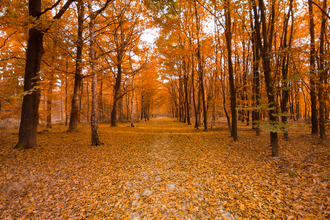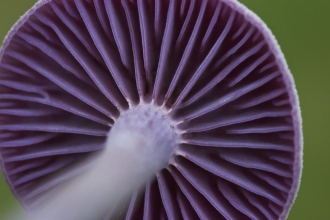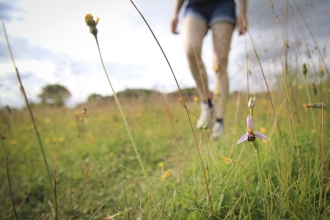Whether you want to take a relaxing stroll around a local park, get blown about on the coast or lose yourself in ancient woodland, here are some of the best seasonal strolls in our region.
Seven of the best autumn walks in Lancashire, Manchester and North Merseyside
Boilton Wood by Alison Wellby
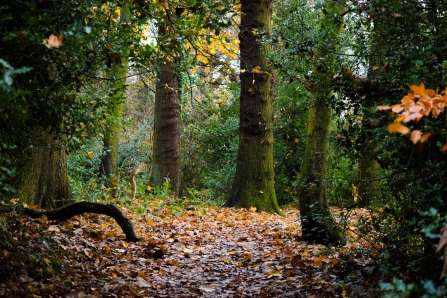
Boilton Wood by Alison Wellby
Boilton Wood
Roe deer, woodpeckers, tawny owls – this is just a taste of the wonderful wildlife you could spot in Boilton Wood. Autumn is also a fantastic time to look for fungi here, with weird and wonderful species like dead-man’s fingers, candlesnuff fungus, jelly ear, turkeytail, leafy brain fungus, puffballs and earthballs popping up as chillier days roll in. As autumn turns to winter, keep your eyes peeled for redwings and fieldfares arriving from Scandinavia, as well as finch flocks fattening up on the autumn bounty. It isn’t unusual to see siskins and bramblings mixed in with roving gangs of chaffinches and goldfinches.
Boilton Wood is part of Brockholes Nature Reserve, so why not extend your walk to include the site’s lakes? At this time of year, they swell with waders and wildfowl, including an annual wintering bittern.

Walkers at Mere Sands Wood
Mere Sands Wood
Nestled amongst the peaceful agricultural landscape of Rufford, Mere Sands Wood is a true wildlife haven. Autumn and winter mark the arrival of overwintering birds like charming teal, handsome pintail and comical shoveler, and when you settle into one of the bird hides with a flask of something warming, you also have a good chance of spotting kingfishers or even a bittern.
Of course, the ‘Wood’ in Mere Sands Wood means there is plenty of woodland to explore as you ramble between each lakeside hide. Sparrowhawks, roe deer and cheeky stoats forage amongst trees which positively glow orange, especially on sunny autumn afternoons.
Bracing autumn walks in North Merseyside

Short-eared owl in Merseyside by Steven D'Cruze
Lunt Meadows
You might want to pick your day carefully for a Lunt Meadows visit. This exposed wetland is wide-open to the elements, but we think this only makes it feel wilder.
Lunt Meadows is a wader hotspot all year-round, with little ringed plovers, avocets and lapwings just a handful of the species that breed here. When autumn arrives the number of lapwings swells to huge proportions and their peeping calls provide a wonderful soundtrack as you stroll between pools. They’re also joined by influxes of redshank, black-tailed godwits, snipe and teal, plus our famous short-eared owls which quarter the surrounding fields.
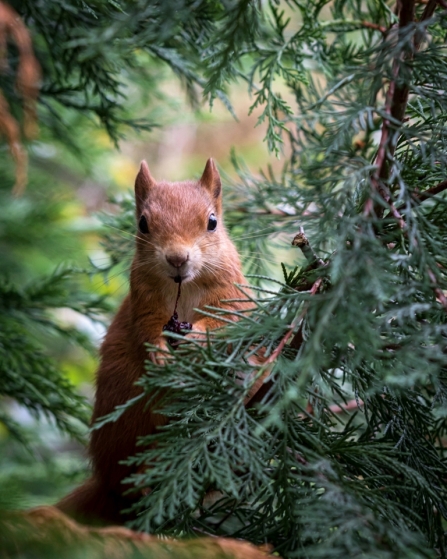
Red squirrel by Helen Haden
Freshfield Dune Heath
Foraging red squirrels are one of my favourite things about autumn – they’re a real joy to watch as they scamper through the canopy and bound across the ground. You can see them in Freshfield Dune Heath’s birch and pine woodland, where they leap between the trees like parachute jumpers and goldcrests flit from branch to branch.
Freshfield Dune Heath isn’t far from Formby and the breezy Sefton coast, which also has a population of red squirrels, so why not make a day of it and extend your autumn walk to include the pine woods and sand dunes of this stunning site?
Autumn walks you never knew existed in Greater Manchester
One of the many pools at Wigan Flashes
Wigan Flashes
Greater Manchester is a bit of a hidden gem when it comes to wildlife and is proof that you don’t need to be out in the sticks to get close to nature. Wigan Flashes is a prime example: 264 hectares of wetland just south of Wigan town centre. Autumn colours reflect in the ‘Flashes’: lakes formed as a result of historic mining subsidence. Now, these Flashes offer irresistible wintering grounds to tufted ducks, gadwall, great-crested grebes and pochards, whose numbers grow throughout autumn. If you’re lucky you may even spot an elusive bittern skulking through the reeds.
As you walk around the reserve, keep a lookout for the gorgeous little willow tit which is the UK’s most endangered small bird. Wigan Flashes sits at the centre of a network of habitats that support 10% of the country’s willow tit population.
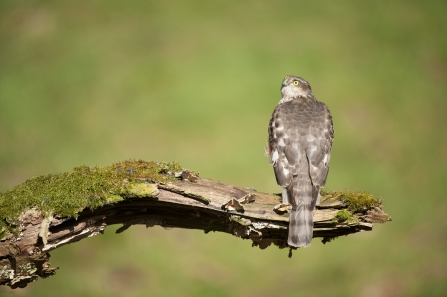
Mark Hamblin/2020VISION
Ringley Woods
Packed with knarled, twisted trees whose leaves have turned toasty shades of orange, yellow and red, ancient woods are some of the best places for autumn walks in Lancashire, Manchester and North Merseyside. Ringley Woods in is no exception, its aged trees playing host to silently swooping birds of prey, tiny treecreepers and roosting tawny owls. Nestled in a steep wooded valley, it’s a peaceful place for a laid-back afternoon stroll.
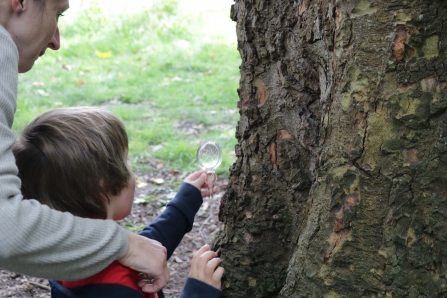
Inspecting trees at Whitworth Park
Whitworth Park
Just minutes from Manchester city centre, Whitworth Park is a green oasis providing autumnal respite from the urban hustle and bustle. 126 year-old trees add bursts of autumn colour and are sure to cheer up even the rainiest afternoon. Many people are surprised to hear that everything from blue tits and nuthatches to great-spotted woodpeckers have been seen at Whitworth Park, and it isn’t just great for birds – the park brims with bugs and bats too.


